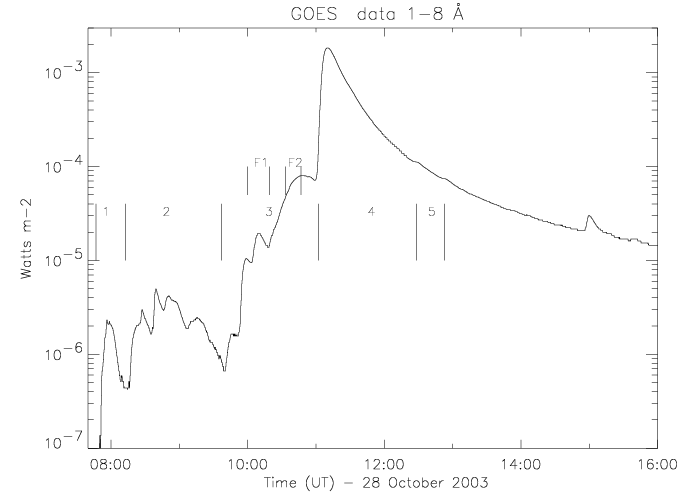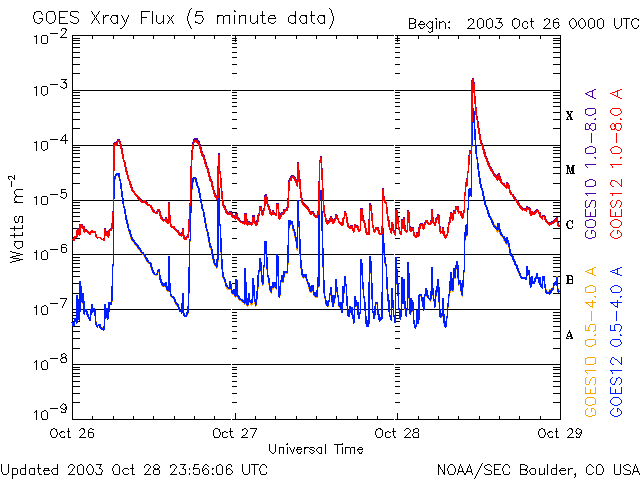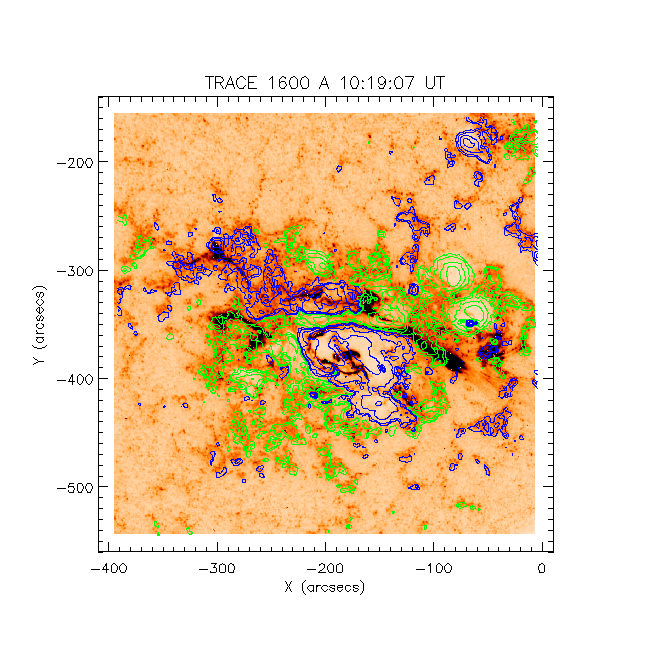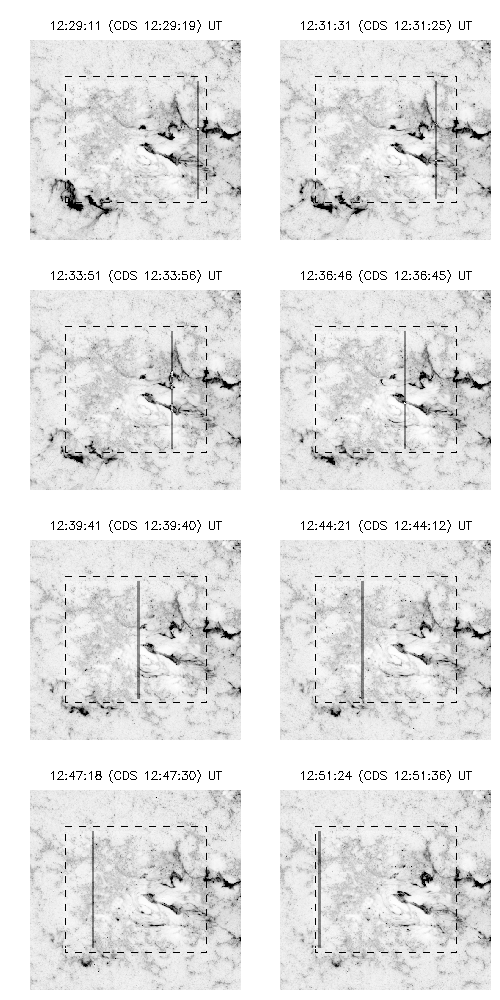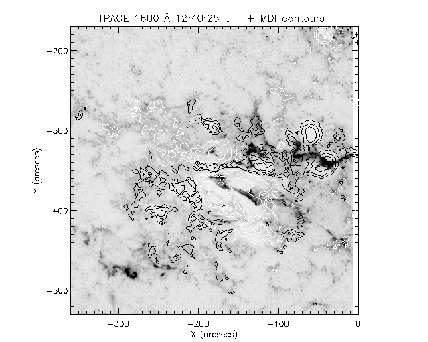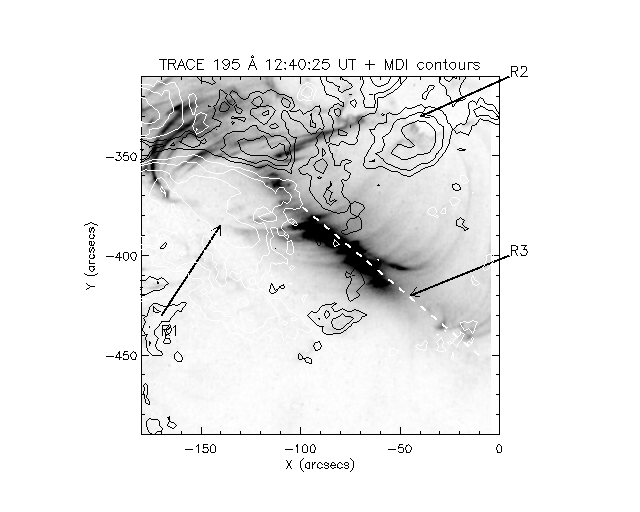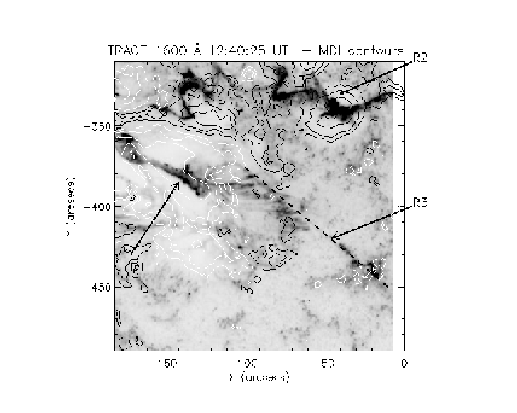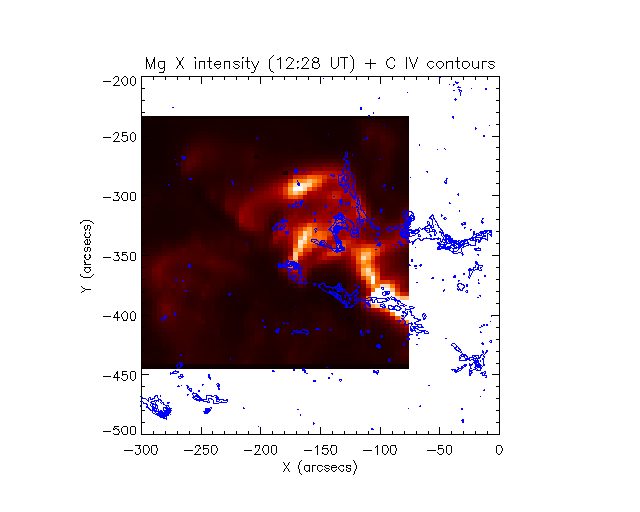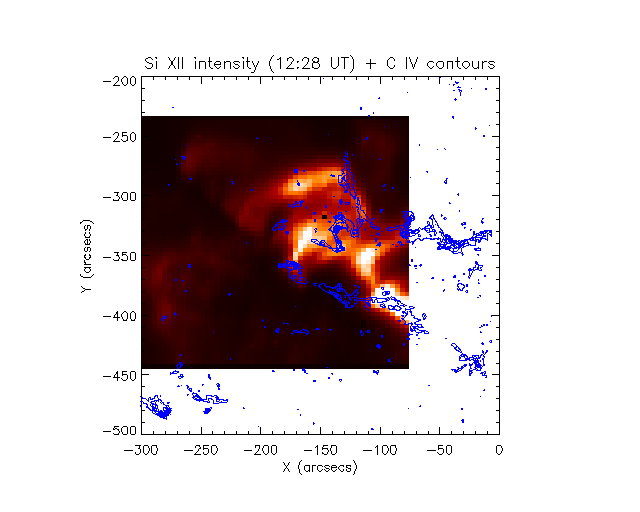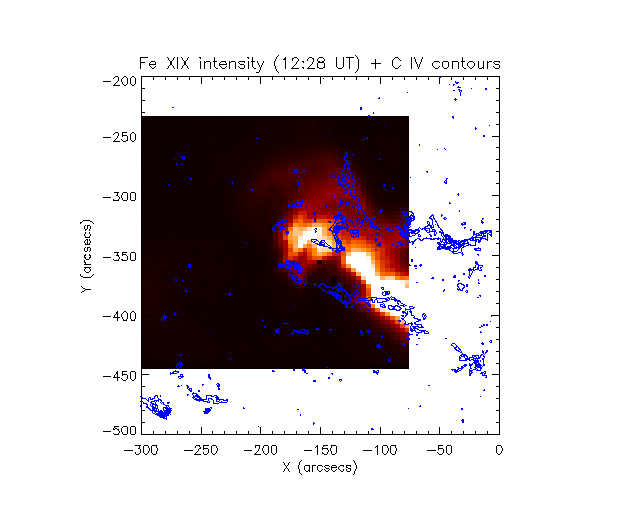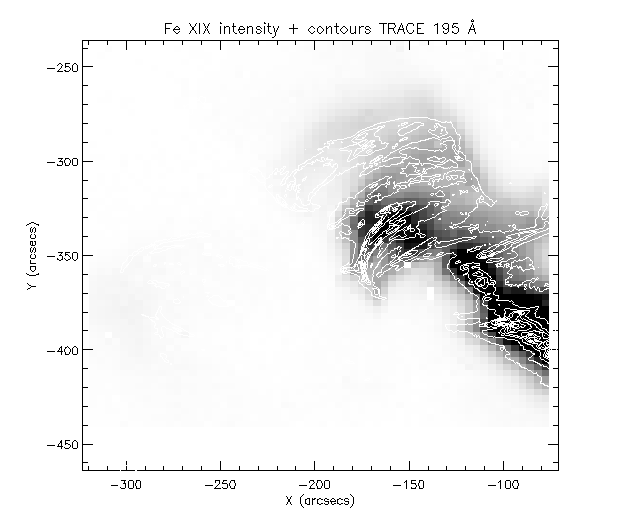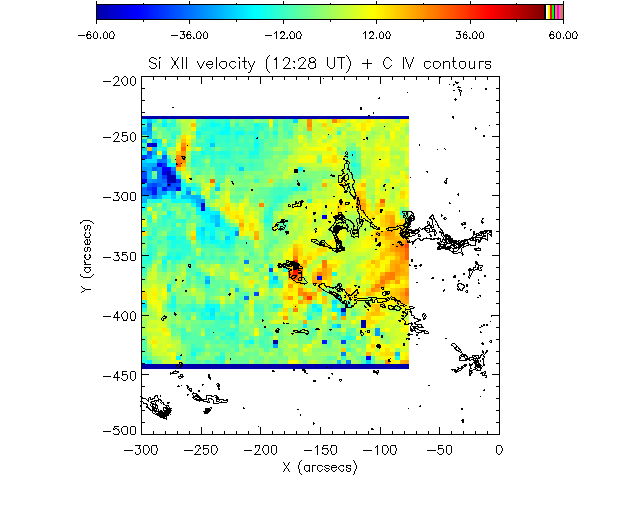article
1 Overview
Figure 1: Time evolution of the GOES X-ray fluxes.
Here we focus on the October 28, 2003 X17 flare.
In the bottom plot, the timings of the 5 successive CDS rasters
are indicated.
CDS observed the two precursor M-class flares F1 and F2
with the third raster.
2 The two pre-events, M-class flares
SOHO CDS observed with the 3rd raster during
09:37-11:02 UT.
CDS observed two distinct M-class flares,
with strong Fe XIX emission
(saturated in the two cores).
The first one (F1) was observed during 10:00-10:19 UT,
while the second (F2) during 10:33-10:47 UT.
The first flare was also observed by TRACE.
Figure 2: Sequence of TRACE 195 Å images, showing
the two M-class flares. Between 10:24 and 10:49 UT
TRACE did not observe. Note the contours of Fe XIX
emission of the two flares observed by CDS.
Figure 3: Sequence of TRACE 1600 Å images, showing
the two M-class flares. Between 10:24 and 10:49 UT
TRACE did not observe.
Figure 4: TRACE 195,1600 Å
with contours from SOHO/MDI magnetogram.
The M-class flare occurred in the region of mixed polarity.
Note also the filament eruption associated with this flare.
Figure 5: SOHO/MDI magnetogram.
Figure 6: CDS monochromatic images at transition region
(O V), coronal (Mg X) and flare (Fe XIX) temperatures, during the
long CDS scan which observed the two F1,F2 M-class flares.
Overlaid are contours of TRACE 1600 Å.
Notice the complex structure of the second flare (left) in the
enhanced Fe XIX image.
3 The X17 flare
Figure 7: Sequence of TRACE 195 Å images
during the X17 flare. The first three images are
shown with a different intensity scale, compared to the
following ones.
Figure 8: TRACE + RHESSI (from Sam Krucker)
SOHO/EIT 195 A movie
SOHO/LASCO movie
Figure 9: GOES + RHESSI + ...
Post-flare arcade
Here we show results concerning the 5th CDS observation
(12:28-12:52 UT). During this time,
TRACE 195 and 1600 Å images show that the 2-ribbon
structure and the arcade of loops is approximately stationary,
with some apparent flows along the loops.
Figure 10: Sequence of TRACE 195, 1600 Å images during the CDS
raster, shown with the
same intensity scale. The FOV of the CDS raster, and the
position of the slit. Notice that overall the loop structures
seen in TRACE 195 Å and the ribbon structures
seen in TRACE 1600 Å remain largely unchanged.
195 A movie
1600 A movie
halpha
Figure 11: TRACE 195, 1600 Å images, with contours from the
SOHO/MDI magnetogram (200, 500, 1000 G).
Notice the arcade of loops seen in TRACE 195 Å
connecting the ribbon structures R1, R2 which are located above the
sunspot regions of opposite polarity.
Also note the system of loops in TRACE 195 Å
which connects the ribbon R3
to R1 and R2. The ribbon R3 is seen in TRACE 1600 Å as an almost straight line of emission.
Flows in TRACE 1600 Å from R3 to R1 are seen.
The cantral part of R3 is also the loaction of the
strongest emission in TRACE 195 Å.
Figure 12: Ha observation from Bialkov, with contours
of SOHO/MDI magnetograms.
Note the similarity with the TRACE 1600 Å image and
the presence of the three ribbon structures.
Figure 13: CDS intensity maps with contours of TRACE 1600 (showing the ribbons).
The post-flare loops show emission at all temperatures
Figure 14: intensity in Fe XIX with
contours of TRACE 1600,195 Å intensities.
Figure 15: CDS velocity map in the transition region (O V)
with contours of TRACE 1600 (showing the ribbons).
Strong downflows (v @ 50-100 km/s ) in the ribbons
are observed.
Figure 16: CDS velocity maps in coronal lines
with contours of TRACE 1600 (showing the ribbons).
Strong downflows (v @ 50-100 km/s ) in the ribbons
are observed.
- The X17 flare presented great complexity.
We have used the CDS to understand the temperature
structure of the various events.
-
Two precursor M-class events have been observed with CDS.
The first one was also observed by TRACE, while the second,
more important one, was not observed by TRACE.
The second one had a complex structure of hot loops.
-
During the precursor events the filament
becomes activated.
-
During the X17 flare the ribbons quickly separate
and an arcade system of loops forms.
These loops are multi-thermal, with the
hottest part in the central region.
-
Strong downflows (v @ 50-100 km/s ), in
particular at transition region temperatures
are observed in the ribbons.
File translated from
TEX
by
TTH,
version 3.08.
On 17 May 2005, 10:45.
